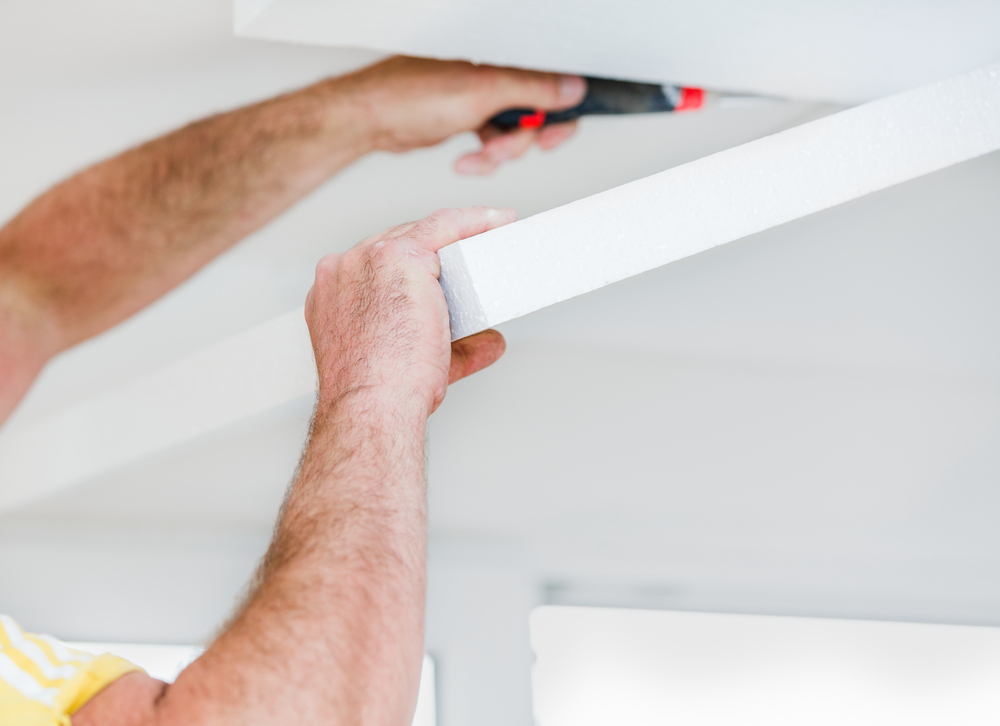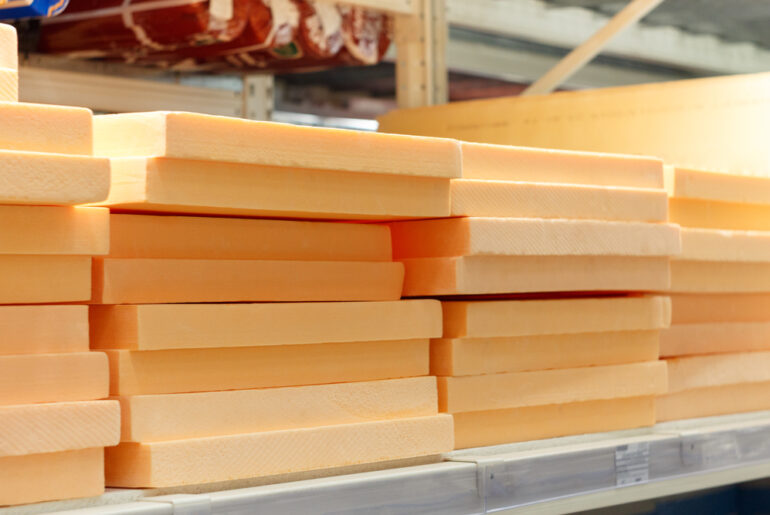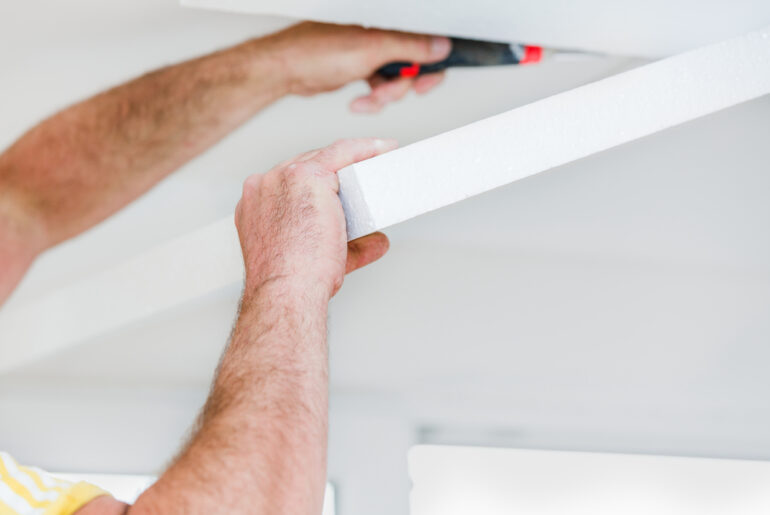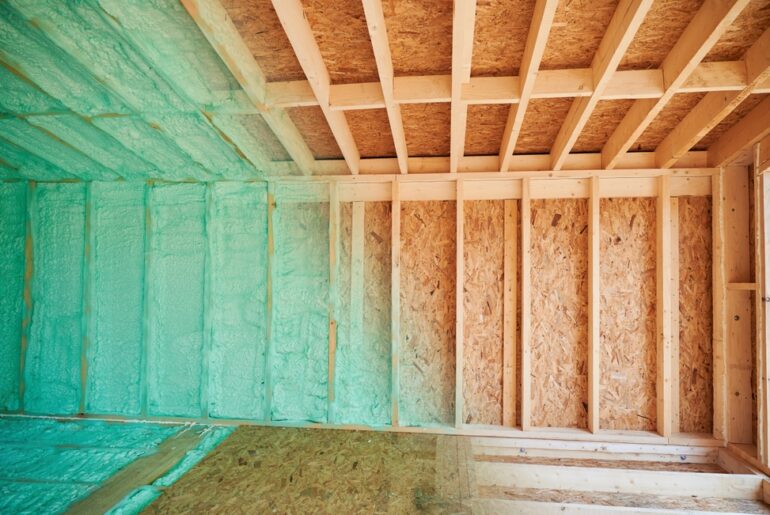All closed cell foam insulation qualifies as a vapor barrier–when it is thick enough and installed properly.
The most popular types of foam board (EPS, XPS, ISO) create a vapor barrier when installed at least 2 inches thick. And have all joints filled with spray foam–then sealed with tape.
Foam board can provide both a vapor barrier and high insulation value–making it an excellent product for exterior and interior applications.
Here is a quick look at rigid foam as a vapor barrier.
What Is A Vapor Barrier?
Vapor barriers (now called vapor retarders) are part of a building’s moisture control system. They reduce the rate at which moisture moves through the material, allowing for more consistent and predictable R values.
A material’s ability to retard water vapor diffusion is measured in perms (permeability). The International Residential Code has 3 classes of vapor retarders.
- Class 1 (0.1 perms or less)
- Class 2 (greater than 0.1 perms and less than or equal to 1.0 perms)
- Class 3 (greater than 1.0 perms and less than or equal to 10.0 perms).
Extruded rigid board foam falls into Class 2. For more detailed information, please see www.energy.gov.
Does Rigid Foam Insulation Need a Vapor Barrier?
No, rigid insulation does not need a vapor barrier. The thick foam board installed properly meets government specifications as a vapor barrier. Provided that your installation meets these requirements.
- Thickness. You must have at least 2 inches of board. To achieve the 2” thickness, you can stack boards–such as two 1” boards. There can be no air space between them.
- Joint Filling. All joints must be filled with low expansion spray foam (such as Quad window and door foam). All butt joints, all corners, and wall to floor/ceiling gaps must be foamedWider gaps–up to an inch might need backing before foaming. (If your gaps are wider than one inch–replace the foam board.) If joints are tight, you can cut a small V into them or use acoustic caulking.
- Sealing. Finish the job by cutting off any excess foam and covering all seams with foam joint tape. Ensure that you foam (if necessary) and tape any imperfections in the foam.
Rigid foam board insulation provides the versatility to be used on exterior walls, interior walls, on concrete, on studs, between studs, and in many other locations. Foam boards will always act as a vapor barrier if they are installed properly.
All of the most popular types of closed cell foam board insulation can form a vapor barrier.
- Expanded Polystyrene (EPS)
- Extruded Polystyrene (XPS)
- Polyisocyanurate (ISO)
When Rigid Foam Board Insulation Is Not a Vapor Barrier?
Foam boards do not act as a vapor barrier if they are less than 2 inches thick. Rigid foam boards are also not considered a vapor barrier if the 2” thickness is made up of more than one layer, but not installed properly. Separate layers must be installed tight to each other to prevent moisture from getting between them. Or if separate layers of board are not installed tight to each other–allowing moisture to get between them.
Foam boards do not act as a vapor barrier if the joints are not filled with foam and then sealed with foam tape.
Failure to do any one of these means you do not have a vapor barrier.
What Types Of Insulation Require Vapor Barrier And Why
Any type of insulation that will absorb moisture–such as fiberglass, cellulose, or rockwool (to a lesser extent) needs a vapor barrier to keep them dry. It is especially important to install a vapor barrier on the warm side of the ceiling.
Warm moist air rises and will find its way into the attic insulation. Please see our article How to Seal Attic Air Leaks With Spray Foam. If insulation absorbs enough moisture it is virtually worthless.
The R value of insulation–such as fiberglass–does not come from the product as much as from the dead air trapped in it. Wet insulation has few, if any, air pockets. Meaning it has no value as insulation. But it is great at producing mold. Very good. You could also explain that wet insulation isn’t just ineffective, it’s actually worse than no insulation at all because liquid water is a better conductor of thermal energy than air (water vapor).
End Notes
Most people consider a vapor barrier to be a material that prevents moisture from penetrating your wall and getting insulation wet. A vapor barrier inside and outside of a wall will also trap moisture in the wall cavity. Install a vapor barrier on one side only–generally the warm side.
Two-inch rigid board insulation is often added to exterior walls when new siding or stucco is installed. If there is already a vapor barrier on the inside you could keep trapped moisture from escaping. Moisture in wall cavities can decrease insulation R-value–and possibly cause rot or mold.





